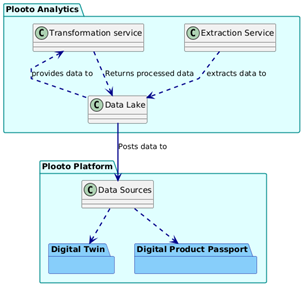The Plooto project is deploying the digital tools it has developed for circularity in three pilots. From these, the Applied Artificial Unit from Eurecat is coordinating the second pilot based on recycling Permanent Magnets (PM) extracted from Waste from Electronical and Electrical Equipment (WEEE). The pilot is formed by three partners (Ferimet, IMDEA and IMA) which are part of different stages in the required supply chain for magnets recycling.

Figure 1: Schema of the WEEE for magnets pilot.
In addition, Eurecat supports all pilot partners by developing tools for data acquisition and analysis. Also, the robotics unit from Eurecat is supporting Ferimet in defining a specific methodology to aid human operators in the dismantling of different WEEE equipment.
The pilot has two types of challenges. One is the different manufacturing processes involved which are being developed and adapted for PM recycling during the project, and the latter considers the adaptation of multiple digital tools that the project will bring to the pilot (Digital Product Passport, Digital Twins, Process modelling, Analytics and Optimization). The implementation of these digital tools requires that each pilot partner is able to provide significant data to the Plooto platform. This represents a challenge since data generated in the different processes are offline parameters which cannot be digitalised automatically. For this, Eurecat has worked with Frontier to develop an interoperable data management and analytics solution (find more information in their description).

Figure 2: Simplified schema of the Plooto Analytics services and the interaction with the Plooto Platform. More information can be found here.
The data extraction has been a challenge since there are more than 20 magnitudes of material specifications and manufacturing parameters only for one partner that are updated less than once per day, the extraction service has been implemented by developing a set of templates in Excel for each manufacturing step. Thus, each partner uploads its templates to the extraction service. The template consists of an Excel file where each partner can fill the tables associated with their processes.

Once the data is uploaded, the Plooto analytics component processes the information, stores it in a datalake and posts the data into the Plooto platform following the available data connectors for external services. The data posted in the Plooto platform is used for modelling purposes (DT) and integrated into the certifications shared between the pilot partners.
Eurecat continues to improve the analytics component and in the future new tools will be added to expand its functionalities and improve its integration with the different services from the Plooto platform.

